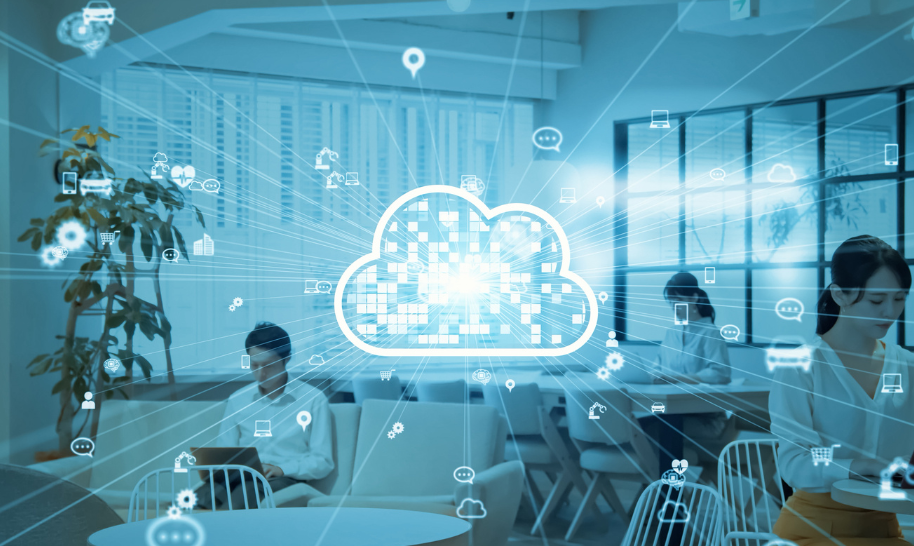Idea generation is the first step in any new product development. The initial idea might seem impossible and unrealistic. Still, a structured development process can turn it into a fully-fledged product.
Millions of people use the App Store and Play Market daily to download apps. They need to realize the lengthy product development process each product goes through before it is ready to sell.
Understanding the market and the competition, as well as the consumers and the customers, is essential to ensure that the product will meet the customer's demand and provide satisfaction.
Collaboration between software development company and contract producers has ushered in a new era of innovation. But before they can be put on the market, all products, ideas, and systems must be thoroughly screened. This is where the process of new product development comes in. Your new idea could cost you financially and your reputation if it needs to be properly developed.
This guide will examine developing a new product to help you bring your concept from conception to market within a short time frame.
What Is Product Development?
Product development is a term that encompasses all the stages involved in bringing a product to life and releasing it on the market.
Product development is no longer just the development part of the cycle. It now encompasses the entire process. It starts with ideation and continues through all product life cycle stages - from market analysis to strategy, production to market testing, planning for the launch, etc.
Many teams can be involved in each stage. These include a product manager and research and development. Each step may have several outputs, including a product prototype, concept, or roadmap.
New product development, while a similar term to product development, is used to create new products designed to fit the market. New product development does not guarantee that the product will be as successful as the current product. Early product concept testing is crucial to gather insights about customer pain points.
Measuring and tracking product market fit during the entire new product development cycle is important. It is important to gather user feedback and act quickly if needed.
How Does Development Fit into the Product Life Cycle?
The product lifecycle is a set of phases through which all physical or digital products pass, from concept to commercialization and discontinuation. It's a structured and systematic approach to developing a product, bringing it to the market, and keeping it there until it doesn't meet customer needs or becomes outdated.
This article focuses on the product life cycle's first phase, development. It then moves into four other phases.
Introduction: You implement your go-to-market strategy and get your first glimpse of whether your product meets customer needs. Sales increase slowly but then accelerate as you implement your marketing and business development strategy.
Growth When your product resonates well with consumers, your marketing and sales efforts will be boosted through virality and word-of-mouth. At this stage, competitors with similar products will usually emerge.
Maturity The sales growth plateaus or even starts to decline. However, overall sales and revenues may continue to rise. Your product's sales may decline near this phase's end. You must decide whether to develop a new product or iterate on your current one.
Decline Most products see their sales and market share decrease over time. You should have a plan to reduce marketing, sales, and production efforts. This will allow you to iterate your product or retire it quickly.
Although development may seem like the first of many steps in a long process, it is by far the most crucial. Your idea will reach maturity with a thorough product development process.
Difference Between Product Management and Product Development?
Product management, on the other hand, is responsible for the product's strategy, roadmap, and features throughout its development cycle.
The product developers are responsible for the design and development of the products. They ensure that the designs and ideas meet the needs and expectations of the customers.
Product managers, on the other hand, oversee the entire development process, strategy, positioning, and profitability of the products. Both roles are essential to ensure that the product development process runs smoothly and that the product is designed well and ready for the market.
Things to Consider Before Starting the Product Development Process
Let's look at some prerequisites for product development before we get into how to make a product. Before you begin the process of product creation, consider the following factors.
Does the Product have a Demand?
Is the product that you are considering meeting a need? The importance and frequency of the condition will determine the market size.
If you have an idea-driven concept, there may not be a market for your product. You will need to evangelize the product to the public to sell it.
Can it be Manufactured?
While anything can be made or adapted using Photoshop, the engineering field only sometimes allows us to have that same creative freedom. Can this product be manufactured from a technical standpoint? Exists a manufacturing facility exist somewhere on the planet?
How can the Product be Delivered to its Customers?
Where do your customers live? Does the target group have a way to transport and deliver your product, or do you need to think creatively and create new distribution partners?
The existence of ecommerce platforms and logistic SaaS solutions makes this step easy. You can sell and deliver your products virtually anywhere in the world.
What Will be the Competition?
Will the product launch be a copycat product that addresses an existing market? If so, you must have a better value proposition and more aggressive customer acquisition strategies than your competitors.
Will it be a unique product with little direct competition, where you'll focus on differentiating your product from what the market offers? It is sometimes preferable to have existing competitors since it shows a demand for the product.
Are you Able to Provide the Required Financial Resources?
Developing a new product is a significant investment. It may be necessary to provide financial support depending on the product's technical features and competitive positioning. Will you be able to survive until your first sale? Will you require additional funding during the process of your business? How ambitious you can be depending on your financial resources.
Product Development Process: From Idea to deployment to its real value
The reality is often very different. We can describe a product creation process as a series of sequential steps leading to achieving a goal. The stages of product development appear to be in a chaotic order.
Concept and Idea
First, we define the original product concept. You may need help pinpointing the exact origin of your product concept. It could have come from an aha moment, a conversation with a friend, or a statistic you learned.
Imagine that you had an idea while in the shower. You will need to write down the idea on paper.
You can conceptualize an idea in several different ways. The process can be lengthy, as you have to juggle thoughts, feedback from users, friendly advice, and market feedback. Making notes will help you to articulate the idea of a product better.
Define the product's core functionality, what it does, and for whom it is intended. You can summarize the idea in a few sentences. You've achieved this goal when your grandma can understand the concept.
-
Brainstorming: An organized brainstorming session can be a great source of new ideas. Keep an open mind and take notes throughout the session.
-
Pitching proof: Do not be afraid to pitch to others. This will help you to build your pitch and position of your product.
Market Research
Market research aims to quantify the characteristics and size of demand for a particular product. This is an important exercise that financial partners will ask for regularly, but it should not define the product.
Henry Ford would have discovered that bigger horses were needed had he done market research before developing his products. He instead developed an automated car for which there wasn't a demand at the time.
Open data makes it easy to conduct market research. Many official institutions offer free access to their data sets. You can build a quantitative picture of your product's market by focusing on existing data sources. Your hypotheses can be simple so long as they are credible and clear.
-
Research Online: A service like Statista provides various market statistics. You can also find more by searching Google. The majority of market research can now be conducted online.
-
Change: Keep in mind that the world is constantly changing. It may be worthwhile to build a market hypothesis that alters your market size projections and provides interesting data about your product.
Concept Development & Testing
You must test your idea after narrowing it down.
Concept development: Knowing the difference between a screener and a concept is important. You can only evaluate the attractiveness of an idea to customers after you have created alternative concepts. To provide meaning, concepts should be as precise and tested as possible. You cannot test your idea properly if you use vague or general concepts.
Test Your Concepts: After you have developed your concepts, present them to a group of select consumers. Is your idea appealing enough? Change your concept as often as you need to until it works. Be bold in discarding any that fail to capture your customers' attention or provide value.
Crowdfunding
Crowdfunding involves much more than just funding. It is a way to get market feedback before your product is ready for sale. It's a rich experience because your product is in a market position. You can also interact with your first customers.
You're still working on the product but are already improving your sales pitch through crowdfunding. This is also a great way to raise money at the point where you've invested the most but still have some work to do before your product hits the market.
You can even generate orders for future finished products and cash before your product development cycle ends.
You'll have to rush through the entire product development process in a crowdfunding campaign as if you already completed it. Show the prototype, describe the market, describe your product, offer a price, and create a list of first-time users.
-
Maintain the pace. Crowdfunding has a deadline and a goal to achieve. Keep up.
-
Never give up. Whether you achieve your financial goal for your crowdfunding project is fine. This process will provide you with a wealth of invaluable feedback and learning for your final launch.
Design
You have a prototype ready. Using what you've learned through crowdfunding, you can write technical specifications. You may need external designers to create the design specifications for your final product, depending on the product type you made.
The more specific the specifications you provide, the fewer surprises you will encounter during the design and production process of your product, including "enterprise mobility services." At this stage, you may even consider subcontracting to an outside organization, potentially in another country, to ensure that the design and production processes for enterprise mobility services go smoothly.
-
Prepare for the unexpected. You are at the highest risk during this crucial step. You cannot control many variables, so you must plan for the unforeseeable.
-
Build in buffers. Plan for unexpected delays when planning a launch date.
Marketing
One of the most difficult tasks is to get sales and marketing for a new product right. A go-to-market strategy is a minor step in product development. Still, it's essential to launch a new product.
You'll also need to include a pricing strategy in your marketing plan that considers the novelty of the item.
You'll also define how you will deliver it to the end user. In this step, you'll define the delivery method to end users.
-
Never stop learning: You should never stop learning in business. This is particularly true during the early stages of product launches. You can learn from your first feedback, sales, and advertising messages. What works?
-
Be flexible: Do not let your plans become rigid. Always shift your attention and budgets towards channels that are gaining traction.
Considerations for Your Product Development Process
It is essential to your product's success to monitor its progress through all 8 stages closely. But it is also the minimum.
You need to consider several factors throughout a product's lifecycle to improve your chances of success.
Here are some key points to consider that will help you create a product people want.
Your Product Needs to Sell
A world where products sold themselves would be much more pleasant. And a great product is easier to sell than an ordinary one. You still need to introduce the product to the market and educate your customers about it.
You have many options for getting your product into the hands of customers. While you're doing your research on customers and competitors, you should also consider the best ways to market and sell a product.
Create a go-to-market strategy, which includes a marketing and sales plan. Also, consider how your customers will purchase from you. Ask yourself how to use digital marketing, social media, and e-commerce to reach your market.
Connecting your Product to your Brand
Incorporate the branding of your company into your product's design. Design can be driven by branding and vice versa. They feed off of each other. Branding can be seen in the aesthetics of a product or even how users interact with it. Undoubtedly, it will also be part of your packaging.
Branding is as much about the customer's experience as product form, function, and fit. Look at the iconic brands in your industry, such as Apple, Nike, Gucci, and leaders. Consider how the designs of these brands reflect the strength and power of their brand.
Intellectual Property Protection
The more successful your product is, the greater the number of people who will copy it, especially in industries like IT consulting solutions. Protecting your intellectual property through trademarks, patents, and trade secrets is essential to bringing your product to market successfully in fields like IT consulting solutions.
Remember to consider that your design and manufacturing processes may also contain IP. Intellectual property is a valuable asset for any investor or stakeholder.
Transporting your product to its final destination, which may include a few stops, is important. Logistics involves shipping, warehousing, and delivering the products to their destination. Set up your logistic network to ensure that products are available when needed.
You should plan your logistics in parallel to your production. The goal is reliability, flexibility, and security.
Customer Service and Repair
Your customers will have questions about your product, and there will be issues. Even if your product is well-designed, it may need to be repaired or replaced. This is an important part of any business. Plan and scale it up as sales increase to rectify poor customer experiences immediately.
The Key Takeaway
It can be overwhelming if you've never brought a product on the market.
Don't worry - every product you purchase goes through the same growing pains. Some people do it every day and do it very well. You can hire key experts as part of your team, but you will also need people with first-hand knowledge to teach you how to make a product.
Then, they can help you and your internal team take your product through this process - especially if it's your first time to market.
You might need a research expert or a brilliant industrial designer. You'll need a manufacturing partner as well as a source for prototyping. Closeloop was founded on the principle that the best way for any entrepreneur, SMB, or enterprise to realize their idea is by combining a team of experts and well-established processes.
Closeloop is the ideal service provider for your product development requirements. We focus on helping companies of all sizes to create products. We have an entire network of individuals and organizations familiar with your goals. Contact our experts who will explain things to you and others who are interested.
Start the Conversation
We collaborate with companies worldwide to design custom IT solutions, offer cutting-edge technical consultation, and seamlessly integrate business-changing systems.
Get in TouchUnlock the power of AI and Automation for your business with our no-cost workshop.
Join our team of experts to explore the transformative potential of intelligent automation. From understanding the latest trends to designing tailored solutions, our workshop provides personalized consultations, empowering you to drive growth and efficiency.
Go to Workshop DetailsExplore Our Latest Articles
Stay abreast of what’s trending in the world of technology with our well-researched and curated articles
View More InsightsCost Breakdown to Build a Custom Logistics Software: Complete Guide
Global logistics is transforming faster than ever. Real-time visibility, automation, and AI...
Logistics Software Development Guide: Types, Features, Industry Solutions & Benefits
The logistics and transportation industry is evolving faster than ever. It’s no longer...
From Hurdle to Success: Conquering the Top 5 Cloud Adoption Challenges
Cloud adoption continues to accelerate across enterprises, yet significant barriers persist....
Gen AI for HR: Scaling Impact and Redefining the Workplace
The human resources landscape stands at a critical inflection point. Generative AI in HR has...




